Indoor Air Quality is important. This sounds like a cliché sentence, but people who’ve had issues know this very well. Air pollutants which are commonly found in a classic domestic environment can cause a variety of symptoms, such as headaches, allergies, sore throats, memory loss, eye irritations and much more. Sometimes it can be difficult to pinpoint what is causing your heavy breathing for example, because you would rarely suspect your home is not aired properly.
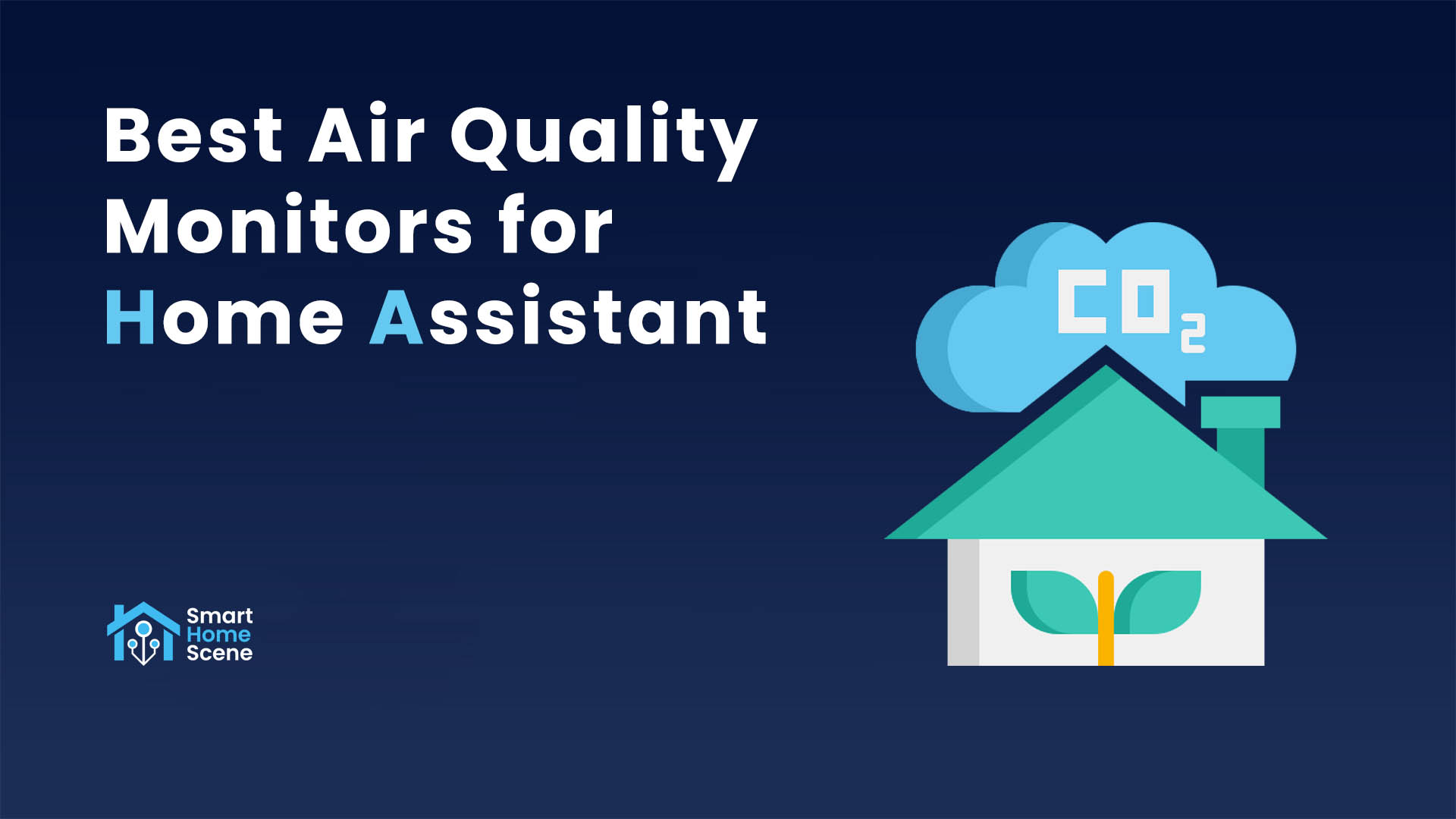
This article contains the Best Air Quality Sensors for Home Assistant. Its also an informative and educational article to a degree, aiming at explaining the most common air pollutants found at home, how to monitor their levels and protect your health. You can jump directly to the list of air quality monitors.
This article provides a comprehensive overview of the Best Air Quality Monitors and Sensors for Home Assistant. It will be consistently updated to include new releases and latest models.
■ First Pick ■ Second Pick ■ Third Pick
A word about air pollutants
If you’ve googled air pollution in the past, you would already be familiar with at least a few of the most common air pollutants, such as CO2, PM particles, VOC, Radon, Formaldehyde etc. After a long research phase, I’ll try to explain their effect on people’s health, and how to monitor the presence in your home so you can act accordingly.

CO – Carbon Monoxide
The most dangerous air pollutant in a closed environment is definitely CO – Carbon Monoxide. CO can kill you within a few hours, it’s a poisonous gas without smell or taste. The first symptom you would experience is a headache and a flu-like symptoms but without a fever.
Expand more info (CO)
| CARBON MONOXIDE – CO | Characteristics |
|---|---|
| Type of Pollutant: | Colorless, Odorless, Tasteless Gas |
| Sources and Causes: | Industrial Emissions, Forest Fires, Motor Vehicles, Burning Gas/Charcoal/Wood |
| Adverse Health Effects: | Fatigue, Headaches, Confusion, Dizziness, Shortness of Breath, Blurred Vision, Loss of Consciousness, Death |
| Safe Levels: | < 50ppm / 8 Hours exposure |
| Sensors: | Heiman HS1CA, First Alert, AirQ Pro |
CO2 – Carbon Dioxide
Even though Carbon Dioxide is not officially considered a pollutant, high concertation in confined spaces can cause some adverse health effects. CO2 is considered a greenhouse gas, which create a natural occurring phenomenon called greenhouse effect, trapping heat and radiation in the earths’ atmosphere.
Expand more info (CO2)
| CARBON DIOXIDE – CO2 | Characteristics |
|---|---|
| Type of Pollutant: | Colorless, Odorless, Tasteless Gas |
| Sources and Causes: | Decomposition, Ocean release, Respiration, Photosynthesis, Deforestation, Burning of Fossil Fuels |
| Adverse Health Effects: | Headaches, Dizziness, Restlessness, A tingling or pins or needles feeling, Difficulty breathing, Sweating, Tiredness, Increased heart rate, Elevated blood pressure, Coma, Asphyxia, and Convulsions |
| Safe Levels: | 250-400ppm Normal background concentration in outdoor ambient air 400-1,000ppm Concentrations typical of occupied indoor spaces with good air exchange |
| Sensors: | Inkbird IAM-T1, Aranet4 Home, AirGradient ONE, Apollo AIR-1 |
Rn – Radon
Radon is a radioactive gas that forms naturally when uranium, thorium, or radium, which are radioactive metals break down in rocks, soil and groundwater. People can be exposed to radon primarily from breathing radon in air that comes through cracks and gaps in buildings and homes. The general effects for the human body are caused by its radioactivity and the consequent risk of radiation-induced cancer. Exposure to radon is one of the main risks of ionizing radiation causing tens of thousands of deaths from lung cancer each year globally.
Expand more info (Rn)
| RADON – Rn | Characteristics |
|---|---|
| Type of Pollutant: | Colorless, Odorless, Tasteless Gas |
| Sources and Causes: | Radium, Uranium, Thorium decay |
| Adverse Health Effects: | Lung Tissue Damage, Lung Cancer |
| Safe Levels: | < 3 pCi/L, Mitigation Needed Above |
| Sensors: | AirThings Wave Plus, RadonEye RD200, AirThings View Plus |
VOC – Volatile Organic Compounds
Volatile organic compounds (VOCs) are gases emitted from certain solids or liquids. They can be a result of many common household products including paints, wood preservatives, aerosol sprays, cleansers and disinfectants, insect repellants, air fresheners, stored fuels, dry-cleaned clothing, and pesticides. VOCs include a variety of chemicals that can have short term and long term effects. Health effects may include eye, nose, and throat irritation, headaches, and damage to the liver, kidney, and central nervous system.
Expand more info (VOC)
Most common indoor VOCs are formaldehyde, benzene, acetone, butanal (cooking gasses), ethanol (alcohol).
- CH2O – Formaldehyde
- strong smelling, colorless, flammable gas
- found in floor lacquers, building materials, fertilizers, molded plastics, paint
- can cause lung tissue damage and cause lung cancer
- C6H6 – Benzene
- sweet odor, colorless, flammable gas
- found in paint, glue, carpeting, gasoline combustion
- can cause headaches, tremors, dizziness, confusion, unconsciousness, sleepiness
- C3H6O – Acetone
- strong smelling, colorless, flammable liquid, evaporates quickly
- found in nail polish, paint, varnish, household cleansers
- can cause dry mouth, dry skin, dry eyes, headaches, dizziness
- C4H8O – Butyraldehyde (Butanal)
- strong smelling, gray/white color, flammable gas
- caused by burning barbecues, candles, tobacco, stoves
- can cause lung irritation, lung cancer, asthma attacks, shortness of breath
- C₂H₆O – Ethanol (Alcohol)
- colorless, pungent taste, flammable liquid
- found in glass cleaners, dishwasher detergents and laundry detergents, perfumes
- can cause mood changes, slower reaction time, uncoordinated movements, slurred speech and nausea
These are some of the air pollutants frequently found in a standard domestic environment. There are many more that fit this category (VOCs), such as toluene (paint, inks, dyes), carbon disulfide (chlorinated water), dichlorobenzene (deodorizers), xylene (gas emissions), terpenes (dish soap, laundry detergent).
A good VOC sensor is capable of detecting all of them, and alert you when you need to react. Even though most of them carry some kind of odor, you may not notice it in small quantities and potentially harm yourself or others in your home.
PM – Particulate Matter
PM stands for Particulate Matter: a term for a mixture of solid particles and liquid droplets found in the air. Some particles, such as dust, dirt, soot, or smoke, are large or dark enough to be seen with the naked eye. Others are so small they can only be detected using an electron microscope. Because of their size, they are separated in several categories.
Expand more info (PM)
- PM0.1 – Ultrafine Particles
- aerodynamic diameter of 0.1 μm or less
- causes: ultra fine dust, combustion
- PM2.5 – Fine Particles
- aerodynamic diameter of 2.5 μm or less
- causes: wildfires, vehicle exhausts, industrial emissions
- PM10 – Coarse Particles
- aerodynamic diameter of 10 μm or less
- causes: smoke, dust, mold spores, some bacteria
Because of their size, PM0.1 particles are almost impossible to monitor with domestic equipment or smart home products. Recent research suggest they contain about 90% of particulate matter indoors and pose a worse health threat than PM2.5 or PM10 particles. [Source]
The silver lining is, you do not need to explicitly monitor PM0.1. PM10 particles contain PM2.5 and PM01 particles. In the same way, PM2.5 particles contain PM0.1 particles. It’s safe to assume they are present whenever there is a larger concertation of PM10 or PM2.5 particles in your environment.
PM10 and PM2.5 particles can be monitored with some smart equipment, and combined with a good air filtration system or an air ventilation, you should have no issue.
Best Air Quality Monitors for Home Assistant
FIRST PICK (TIE): AirGradient ONE and Apollo AIR-1
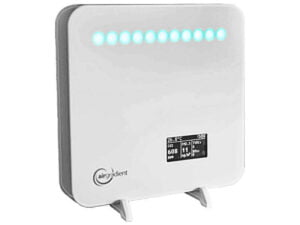
- Model: AirGradient ONE
- Connectivity: Wi-Fi 2.4GHz / Bluetooth 4.2
- Power Supply: 5V1A
- Sensors:
- Carbon Dioxide (CO2), PM Particles, Temperature, Humidity, TVOC, NOx
- Availability: AirGradient Webstore
The AirGradient ONE is one of the best air quality sensors for Home Assistant. It can be used with open-source ESPHome firmware and integrated completely locally in HA. Equipped with a dedicated Carbon Dioxide CO2 sensor [SenseAir S8] , PM Particles sensor [Plantower PMS5003], TVOC and NOx sensor [Sensirion SGP41] as well as a Temperature and Humidity sensor [Senirion SHT40], it monitors your home environment quite accurately.
It’s case is meshed to allow for air to circulate better and get a more accurate reading. PM particles are measured in 0.3, 1.0, 2.5 and 10.0 microns giving your a very precise overview of your indoor air quality. It’s feature set is complimented by an OLED screen mounted on the front as well as a set of indicator LED lights.
Read the AirGradient ONE Full Review to learn more.
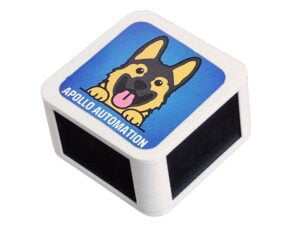
- Model: Apollo AIR-1
- Connectivity: Wi-Fi 2.4GHz / Bluetooth 4.2
- Power Supply: 5V1A
- Sensors:
- Carbon Dioxide (CO2), PM Particles, Temperature, Humidity, Gases, Air Pressure, Illuminance, UV index
- Availability: Apollo Webstore
The Apollo AIR-1 is another great air quality monitor, perfectly integrated in Home Assistant. It also relies on open-source ESPHome firmware, enabling fully local control with HA. The AIR-1 is equipped with a Carbon Dioxide CO2 sensor [Sensirion SCD40], PM Particles sensor [Sensirion SEN55], Gases sensor [DFRobot MiCS-4514] and an Air Pressure sensor [Infineon DPS310].
The AIR-1 is much smaller the AirGradient ONE, while also having a mesh on all sides to allow for air circulation. The CO2 or PM particle levels can be indicated visually by it’s built in RGB LED, enabling some interesting automation options on Home Assistant.
Read the Apollo AIR-1 Full Review to learn more.
SECOND PICK: AirQ Pro
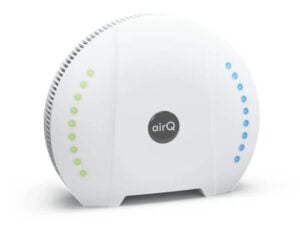
- Model: AirQ Pro
- Connectivity: Wi-Fi 2.4GHz
- Power Supply: 5V1A USB-C
- Sensors:
- Carbon Dioxide (CO2), Carbon Monoxide (CO), PM Particles, Ozone, Oxygen, Nitrogen Dioxide, Hydrogen Sulfide, Temperature, Humidity, Gases, Air Pressure
- Availability: AirQ Webstore
The AirQ Pro is an extremely capable and feature rich indoor air quality monitor compatible with Home Assistant. It can measure Carbon Dioxide (CO2), Carbon Monoxide (CO), PM Particles, Ozone, Oxygen, Nitrogen Dioxide, Hydrogen Sulfide, Temperature, Humidity, Gases, Air Pressure and calculate Absolute Humidity and Dew Point.
The AirQ devices use Wi-Fi to communicate with your network and integrate with Home Assistant quite well via the official integration. The integration uses local polling, which means AirQ devices communicate with HA completely locally. If you are looking for a top-tier air quality monitor and have the money to spare, then AirQ Pro is for you.
The reason AirQ Pro gets second place is because the device is very expensive, although you could look into the Basic and Light versions if you do not need so many sensors in one device.
Best Carbon Dioxide (CO2) Sensors
FIRST PICK: Inkbird IAM-T1
The INKBIRD IAM-T1 is a battery-powered air quality sensor that monitors your indoor Carbon Dioxide CO2 [SenseAir Sunrise HVAC] levels as well as temperature, humidity and air pressure. It’s equipped with a simple e-ink display, which allows you to glance the current CO2 levels from a distance without distortions.
The IAM-T1 is battery-powered and uses BLE to communicate, going for up to 4 years on a set of AA batteries. It’s BLE advertisements can be captured with an ESP32 board, allowing you to monitor your air quality with the IAM-T1 completely locally. I shared the full code for making this device work with ESPHome.
Read the INKBIRD IAM-T1 Full Review to learn more.
SECOND PICK: Aranet4 Home
The Aranet4 Home is another great option for monitoring Carbon Dioxide levels. It relies on the same Senseair Sunrise HVAC sensor for getting its CO2 reading. It’s also equipped with an e-ink display, showcasing the CO2 value in ppm, as well as temperature and humidity above it.
The Aranet4 integrates in Home Assistant via its official integration that uses local push. You can capture its packets with an ESP32 board or another Bluetooth dongle and eliminate its cloud dependency and app. The Aranaet4 has a battery life span of 2 years, which can be pushed to 3 if you use lithium-ion batteries instead of alkaline.
Best Carbon Monoxide (CO) & Smoke Detectors
FIRST PICK: Heiman HS1CA-E
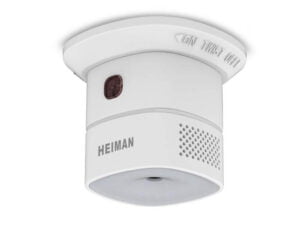
- Model: Heiman HS1CA-E
- Connectivity: Zigbee 3.0
- Power Supply: Battery
- Sensors:
- Carbon Monoxide, Smoke
- Availability: AliExpress | AliExpress
If you are looking for a simple carbon monoxide detector, the Heiman HS1CA is a great pick. It relies on the UL-certified Figaro 5141 sensor , which is an electrochemical sensor for detecting CO presence in residential and industrial settings.
The Heiman HS1CA is powered by a single CR123A battery, has a built-in siren and can be easily mounted on a ceiling. It uses Zigbee 3.0 to communicate and is supported in both Zigbee2MQTT and ZHA in Home Assistant. Check out the full review to learn more.
SECOND PICK: First Alert 2nd Gen
If you prefer deploying Z-Wave devices for such critical use cases, then consider the First Alert 2nd Gen carbon monoxide detector. Being supported in Z-Wave JS, this model is a highly praised within the community. It reliably alerts you in case of CO build-up from fires, stoves and car exhausts in garages.
Instead of an electrochemical sensor, the First Alert detector relies on an optical sensor by the same company – Figaro. An LED shines light into a dark chamber attached to the bottom of the PCB, and if any smoke gets inside, the light gets scattered and partially reflected onto a photodiode, triggering the sensor.
Best Particulate Matter (PM) Monitors
FIRST PICK (TIE): AirGradient ONE and Apollo AIR-1

- Model: AirGradient ONE
- Connectivity: Wi-Fi 2.4GHz / Bluetooth 4.2
- Power Supply: 5V1A
- Sensors:
- Carbon Dioxide (CO2), PM Particles, Temperature, Humidity, TVOC, NOx
- Availability: AirGradient Webstore
The AirGradient ONE is a really capable and reliable particulate matter sensor, relying on the well-known Plantower PMS5003 sensor for its readings. It can measure PM particles in 0.3, 1.0, 2.5 and 10.0 microns in diameter, giving you a comprehensive overview of the current air quality in Home Assistant.
Once flashed with the official ESPHome firmware, the device works completely locally and doesn’t require any cloud dependencies. Along with the Apollo AIR-1, these two are the best air quality sensors that measure particulate matter and use open-source ESPHome firmware. I’ve covered everything there is to know in my AirGradient ONE review.

- Model: Apollo AIR-1
- Connectivity: Wi-Fi 2.4GHz / Bluetooth 4.2
- Power Supply: 5V1A
- Sensors:
- Carbon Dioxide (CO2), PM Particles, Temperature, Humidity, Gases, Air Pressure, Illuminance, UV index
- Availability: Apollo Webstore
Similar to the AirGradient ONE, the Apollo AIR-1 measures particulate matter in 1.0, 2.5, 4.0 and 10.0 microns in diameter. It’s readings rely on the latest Sensirion SEN55 sensor by the well-known Swiss manufacturer, promising a lifespan of the sensor of up to 10 years. This is worth noting because almost all PM sensors have an average lifespan of only 2-3 years.
The Apollo AIR-1 also uses open-source ESPHome firmware, pushing data in Home Assistant completely locally. The RGB LED can be fully automated in Home Assistant, giving you the possibility for using these as visual indicators.
Because of its compact size and comprehensive sensor list, the Apollo AIR-1 is my personal favorite air quality monitor for Home Assistant, hands down. Check out my full review to learn more.
SECOND PICK: AirQ Pro

- Model: AirQ Pro
- Connectivity: Wi-Fi 2.4GHz
- Power Supply: 5V1A USB-C
- Sensors:
- Carbon Dioxide (CO2), Carbon Monoxide (CO), PM Particles, Ozone, Oxygen, Nitrogen Dioxide, Hydrogen Sulfide, Temperature, Humidity, Gases, Air Pressure
- Availability: AirQ Webstore
If you are on the market for a premium air quality monitor, then consider the AirQ Pro. This device measures Particulate Matter in 1.0, 2.5, 10.0 microns diameter, along with a very extensive set of sensors. All AirQ devices integrate locally in Home Assistant, which is a primary ranking factor of this list. Just like above, AirQ Pro gets a spot bellow because of its price – it’s significantly more expensive than comparable devices.
THIRD PICK: Qingping Air Monitor Lite
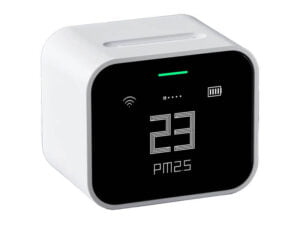
- Model: Qingping Air Monitor Lite
- Connectivity: Bluetooth 5.0
- Power Supply: Rechargeable Battery
- Sensors:
- Carbon Dioxide (CO2), PM 2.5, PM 10, Temperature, Humidity
- Availability: Amazon US | Amazon UK
Amazon DE | Amazon NL | AliExpress
The Air Monitor Lite by Qingping is a very minimalistic and sleek looking indoor air quality sensor. It measures Carbon Dioxide (CO2), PM 2.5, PM 10, Temperature and Humidity. The Qinping Lite measures particulate matter very accurately, and has a special spot in the smart home community because of this.
All BLE packets can be captured locally with a Bluetooth radio. You can use your Pi’s Bluetooth radio or use an ESP32 board as a Bluetooth Proxy, which will push readings from the Qinping Lite to Home Assistant.
Honorable mention: Purple Air Classic Monitor
Even though the PurpleAir Classic is a really capable device with excellent sensors, it’s measurements are hidden behind a paywall. You can use with the Home Assistant with the official integration, but at some point you would be forced to purchase additional points to continue using their API.
Best Radon (Rn) Level Detectors
FIRST PICK: AirThings Wave Plus
AirThings produces different devices for measuring indoor air quality, with a heavy focus specifically on Radon sensors. The AirThings Wave Plus is a multi-sensor device capable of measuring Radon (Rn), Carbon Dioxide (CO2), Volatile Organic Compounds (VOCs), Temperature, Humidity and Air Pressure.
AirThings devices can be integrated in Home Assistant via their API or by simply capturing their Bluetooth (BLE) packets with a Bluetooth radio or an ESP32 board. The Wave Plus is a battery-powered device with a lifespan of 1.5 years on a good set of AA batteries.
SECOND PICK: Radon EYE RD200
The RadonEye RD200 is a fast and accurate sensor for anyone interested in knowing how Radon (Rn) values varies in their home or workplace. It uses pulsed ionization chamber for getting a measurement and updates the value every 10 minutes. The RD200 does not measure other gases or PM particles.
It can be integrated in Home Assistant by capturing it’s BLE packets with an ESP32 board or your Raspberry Pi’s Bluetooth radio. This allows the devices to be polled completely locally, bypassing any cloud dependency of the RadonEye RD200. This sensor is powered by a 12V DC adapter and has a 1 inch OLED screen on top for displaying the Radon measurement.
THIRD PICK: AirThings View Plus
The AirThings View Plus is a beautiful and capable air quality monitor, measuring Radon (Rn), Particulate Matter (PM, Carbon Dioxide (CO2), Volatile Organic Compounds (VOCs), Temperature, Humidity and Air Pressure. Its can be powered by 6 AA batteries or USB-C and uses Wi-Fi to communicate to your smart home.
Unfortunately, the View Plus only allows for cloud polling through the official AirThings Integration. It cannot be integrated locally in Home Assistant, which is why it gets third place. If you don’t mind the cloud dependency, the View Plus works great with Home Assistant and is quite a capable air quality monitor.
Best Outdoor Air Quality Monitor
FIRST PICK: AirGradient OpenAir
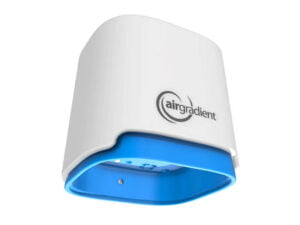
- Model: AirGradient OpenAir
- Connectivity: Wi-Fi 2.4GHz / Bluetooth 4.2
- Power Supply: 5V1A
- Sensors:
- Carbon Dioxide (CO2), PM Particles, Temperature, Humidity, TVOC, NOx
- Availability: AirGradient Webstore
The AirGradient OpenAir is the best outdoor air quality monitor for Home Assistant. It can measure CO2, PM particles, Temperature, Humidity, TVOC and NOx indexes. It’s mounted with a set of screws and powered by a 5V1A adapter with an USB-C connector.
The device is not very large, so it’s easy to hide out of sight. If you are looking to actually display it, it looks great and has a very interesting shape. Like the indoor model, the AirGradient OpenAir uses ESPHome software with a local connection, integrating perfectly in Home Assistant.
I dismantled the AirGradient OpenAir in my review and documented everything you need to know about this device. I installed it on my terrace and it turned out great, still providing readings of my outdoor air quality.
Best Zigbee Air Quality Monitor
FIRST PICK: Aqara S1 Air Quality Monitor
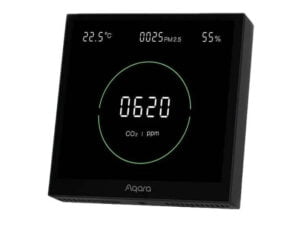
- Model: Aqara S1 Air Quality Monitor
- Connectivity: Zigbee 3.0
- Power Supply: 220VAC
- Sensors:
- Carbon Dioxide (CO2), PM Particles, Temperature, Humidity
- Availability: AliExpress | AliExpress
Unlike most devices on this list, which are either standalone or sticker-mounted, the Aqara S1 is designed to be installed inside a switchbox. This is Aqara’s top-tier air quality sensor, capable of detecting Carbon Dioxide, PM Particles as well as a Temperature and Humidity reading. It uses solid and reliable sensors, such as the Plantower PMST003 for PM particles and Sensirion SCD40 for its CO2 measurements.
The Aqara S1 requires mains power (220VAC) to operate and communicates over Zigbee 3.0 to your coordinator. It’s supported in Zigbee2MQTT and ZHA, while also operating as a network router. It’s main glass panel looks very appealing once installed and is woken up by a small motion sensor mounted on the front. Check out the full review of the Aqara S1 to learn more.
SECOND PICK: Ikea Vindstyrka
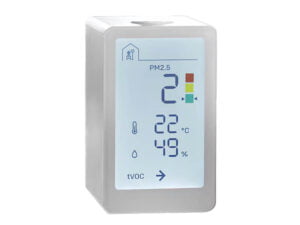
- Model: IKEA Vindstyrka
- Connectivity: Zigbee 3.0
- Power Supply: USB-C
- Sensors:
- VOC Index, PM 2.5 Particles, Temperature, Humidity
- Availability: IKEA Webstore
The IKEA Vindstyrka is a budget-friendly option for a solid Zigbee air quality monitor. It can measure PM particles, temperature, humidity and generate a VOC index. It relies on the Sensirion SEN54 for its particulate matter, temperature and humidity readings.
The Vindstyrka integrates very well over Zigbee in Home Assistant, and is supported in both Zigbee2MQTT and ZHA. It’s important to note that the sensor does not publish measurements in decimal points, so if you’re after that fine-grain overview you need to look elsewhere.
Best Z-Wave Air Quality Monitor
FIRST PICK: MCOHome A8-9
The A8-9 is the latest Z-Wave indoor air quality monitor by MCOHome, a company producing high quality Z-Wave-based devices of this type. It can measure Carbon Dioxide (CO2), PM Particles, VOCs, Temperature, Humidity, Illuminance and uses a PIR motion sensor for waking up the device screen.
The screen itself is a 3.5 inch TFT clear display that showcases the current environment readings in a neat and good looking layout. It can be vertically wall-mounted or set to stand on it’s own on a bookshelf or corner table. Interestingly, the A8-9 is also equipped with a Noise sensor, measuring the current sound levels in your room. Its supported in Z-Wave JS in Home Assistant.
SECOND PICK: Eurotronic Air Quality Sensor
Another great pick for a Z-Wave indoor quality monitor is the Eurotronic Air Quality Sensor. This device also measures Carbon Dioxide (CO2), VOC, Temperature, Humidity, and can calculate the dew point. It requires a 5V adapter to operate and doesn’t use batteries.
This sensor is designed to lay flat on its back, but with a little bit of creativity, you can mount it anywhere. It works with Home Assistant over Z-Wave, providing quite an accurate overview or your room air quality.
Building your own
Most commercially-made air quality monitors are not cheap. The sensors themselves are quite expensive and cost quite a bit. You can always build your own air quality monitor and save some money, although the challenge this poses is debatable whether it’s worth it or not.
AirGradient offers the ONE and OpenAir as a DIY kit at a lower price point, ready to be assembled by you. If you are a tinkerer and know what your are doing, you can always get a Senseair S8, a Plantower sensor and an ESP32 board and build one yourself. Here’s one example by Jeff Geerling to get you started.
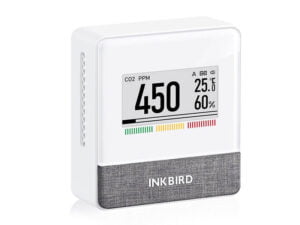
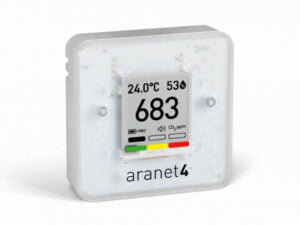
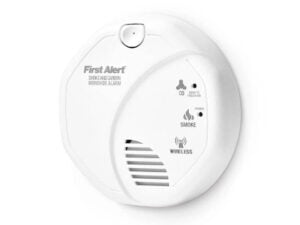
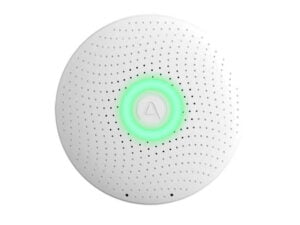
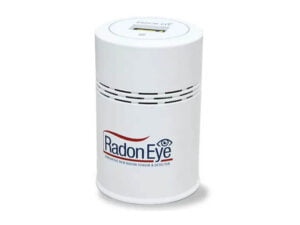
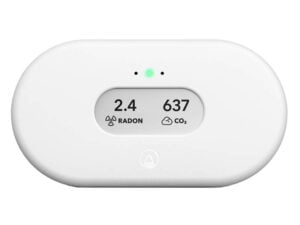
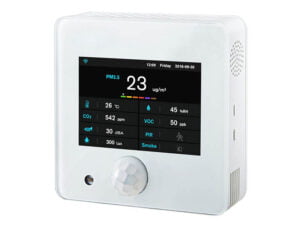
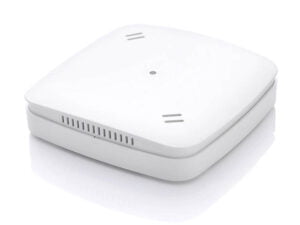
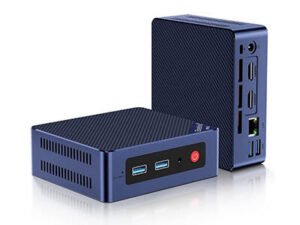

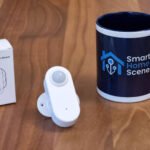
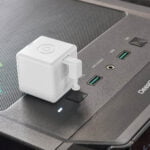





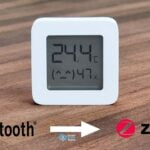
The Apollo AIR-1 has a buzzer? I don’t see it in the ESPHome YAML file on their GitHu repo (nor in mine on Home Assistant, but I’ve customized my build). I see it in the YAML for the MSR-1, but not AIR-1.
It doesn’t, that was I mistake. My apologies.
This is a great guide. I did not know about some of the API restrictions for PurpleAir, for example.
Just an addition on Co2. It is commonly used as a proxy for human respiration, and therefore potential levels of airborne disease. Co2 levels can almost be seen a proxy for Covid and other risk, and many commercial fresh air systems use Co2 as a control level to make sure there is enough fresh air.
So although it is “not officially considered a pollutant”, it is tracked as a proxy for pollutants.
That’s a great way to put it, and I completely agree.
Thank you for your input!